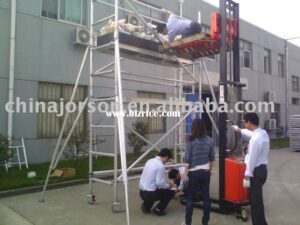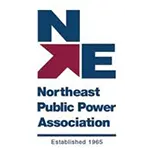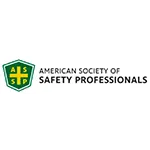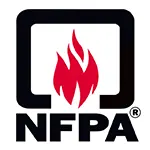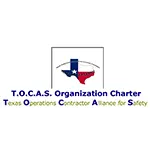CLICK HERE to Renew your Membership
CLICK HERE for a NEW Membership
CLICK HERE to see eligibility requirements for FREE Membership
If you have any questions, please contact me
We offer:
- Over 17,600 categorized unsafe acts/conditions and accident/injury photos
- Over 1,450 ppt's & doc's
- Over 3,975 technical articles on Process Safety & Occupational Safety & Health matters
- Over 450 videos

I am proud to announce that have extended our”Partners in Safety” agreement for another year (2025).
CI Members, send me an e-mail to request your FREE SAFTENG membership.
Many THANKS to my NEW Members and those who CONTINUE to support SAFTENG:





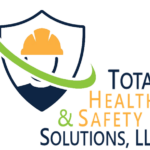








December 25, 2012
A worker was struck and injured when the load line on an articulating boom crane broke and the crane’s load fell about 6 metres (20 feet) to the ground.The load line broke because the crane “two-blocked”, meaning that its travelling lower block (the hook block) and its stationary upper block (the tip sheave) came into contact. This contact can put extreme stress on the load...
Read More
December 25, 2012
What if we were to start “infecting” everyone we work with, live with, meet, etc. with our positive safety attitude and behaviours? Wouldn’t that make a significant difference to us and others? Well this is no far-fetched idea as we see outlined by one organization described in the following excerpt. The Italian oil and gas company Saipem employs 40,000 people worldwide. The company...
Read More
December 25, 2012
The line separating safety from danger is sometimes quite small. To avoid crossing that line, we must always be aware of the hazards around us understand the machines and operations in our work areas take the time to think about the possible consequences that may result from where we place our bodies or the actions we perform. When we do this, we can avoid suddenly finding ourselves in the “line...
Read More
December 25, 2012
Safe people always: Understand the risks of their jobs Perform jobs the way they are supposed to be done, without taking shortcuts Never become complacent about safety Get involved in efforts to improve safety Know what to do in an emergency A personal accident-prevention plan must consist of the following habits: Following safety rules and procedures Using assigned personal protective equipment (PPE)...
Read More
December 25, 2012
A worker is changing out a commercial meter. As he completes this task, he should always vent the gas outside. Everyone knows this, but we sometimes skip it because we’re trying to keep up with the production and maintenance schedule. Well, the small room he was in filled with gas, that eventually was ignited by a nearby water heater. The room blew up and the worker was trapped...
Read More
December 25, 2012
Working under the influence of alcohol is in most work places in most countries is strictly prohibited. This means more than just not drinking on the job. Tests have shown that alcohol can still have an effect on your body up to 18 hours after you have stopped drinking. Alcohol use is a legitimate on-the-job safety issue – and not just an attempt to control off-the-clock lifestyles....
Read More
December 25, 2012
Hippocrates (460-377 B.C.), the father of medicine, thought depression was caused by an excess of black bile, a humor once believed to be secreted by the kidneys or spleen and to cause sadness or melancholy. The Egyptians were first to recognize depression and treat it with the power of suggestion, known today as hypnosis.Doctors and psychologists of the 17th through 19th centuries used the word...
Read More
December 25, 2012
Many times within discussions following an injury incident one hears “He just hurried too much” or “She was in a hurry and got careless.” In both of these statements, a single cause, being in a hurry, is identified. The implication is that if that single cause were eliminated, the “accident” would not have happened. Unfortunately, as is the case with...
Read More
December 25, 2012
Driving is hazardous enough as it is being surrounded by massive pieces of metal moving at high rates of speed. You can’t afford to take your eyes off the road. Every day it seems as if there’s a new way of distracting yourself while driving however. When cars were first invented, they were bare bones vehicles designed for one thing – to get you rapidly from one place to another. It wasn’t long before...
Read More
December 25, 2012
If I have six hours to cut down a tree, I’ll spend the first four hours sharpening my axe” Abraham Lincoln. Simply put this quote is about being prepared which is a critical element of doing a job successfully. When is a job successfully done? When we achieve our target or objective which is also based on how efficiently and safely these results are realized. “Sharpening our axe” is not...
Read More
December 25, 2012
Would you buy scaffolding from a company that does their “safety testing” in this manner? Many thanks to my friends down under for sharing this one with us. The company must be proud of their photo as they plastered their logo all over it – maybe a mistake????
Read More
December 25, 2012
Watch and listen to how the pro’s carry out a PRCS Rescue/Recovery. Pay close attention to the radio traffic and how things are communicated and staging areas utilized. May God bless the soul of the deceased worker, his family, and the rescuers.
Read More


